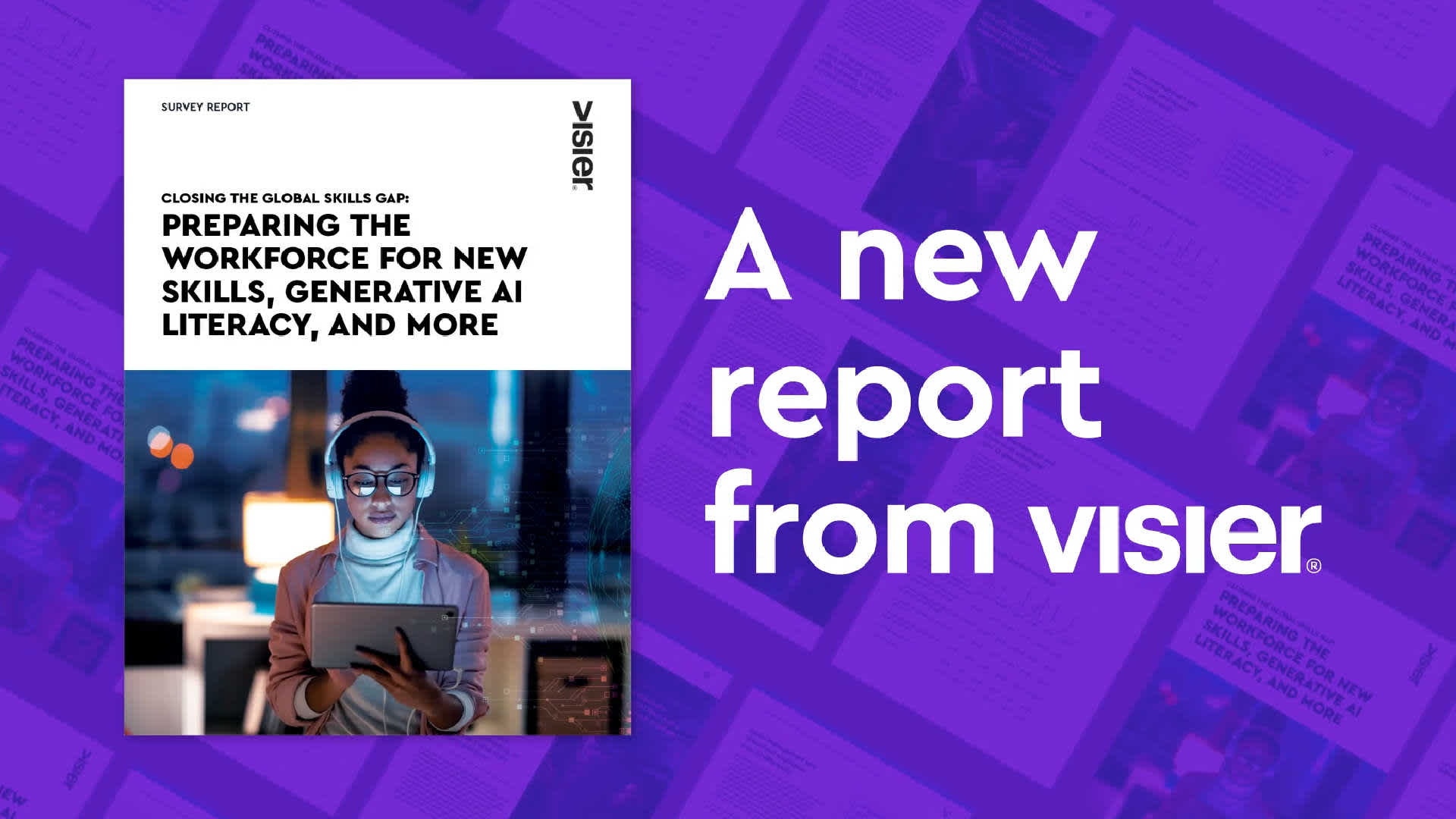4 Strategic Ways Generative AI Bridges the Gap Between HR and Business
The ways in which generative AI will impact HR and connect to business boil down to four key areas beginning with removing siloes.

Nearly everything published so far about what generative AI can do for HR teams is failing to imagine the truly impactful possibilities.
Most prognosticators tend to focus on tactical benefits like increased speed or output—things like getting help writing job requirements, recommending training courses, or screening candidates.
Increased speed and output are both great, but they’re only part of the story. Going faster in the wrong direction only gets you further from the destination.
There’s a bigger story to generative AI than speed and output, and it’s much more strategic in nature. Before writing job requirements, how do you know which jobs are needed? Before recommending a training course, how do you know that the course is effective? Before screening candidates, how do you know what leads to a quality hire?
GenAI is going to have a massive strategic impact on HR and, as a result, the business as a whole.

GenAI is poised to close the People Impact Gap
We’ve long said people data is business data, and businesses that are able to harness the power of their people data see 73% higher profit margin and 137% higher return on assets.
But most businesses still aren’t using workforce data to optimize their business decision-making. This failure to leverage people data to make sound business decisions is what we call the People Impact Gap.
Generative AI will undoubtedly close the People Impact Gap, bringing actionable insights to any HR leader, people manager, and executive with a level of as-yet-unseen simplicity, accuracy, and speed.
4 ways generative AI will help connect HR and business
The ways in which generative AI will impact HR and close the People Impact Gap boil down to these four key areas.
1. HR will no longer operate in silos
As Josh Bersin recently pointed out in his blog, everything in HR is interconnected. Total rewards impact employee engagement, which impacts retention, which impacts talent acquisition, which impacts DEI…and on and on we go. These individual areas shouldn’t be looked at in isolation—they’re an interconnected system. By pulling one lever, you impact another.
The problem is that most HR teams, even the “data-driven” ones, look at static dashboards filled with lagging indicators and isolated data grouped by function like employee engagement scores, compa-ratios, or DEI targets.
Static dashboards don’t show the cause-and-effect relationship between data points. They also lack proper context behind the data and don’t provide insights to make decisions.
Of course, Visier is known for doing everything static dashboards can’t, bringing together all of your people data in real-time and with context so you can make better decisions. The concept—which Bersin coined systemic people analytics—means you can “find any information you need, sort and filter by any dimension, and drill up and down or go back in time to see trends.”
And layering generative AI on top of Visier will cause one major, beneficial change to happen—it will force your HR teams to think beyond their silos and serendipitously collide.
Sure, Visier already lets HR teams see how one lever impacts another. But gone will be the excuses of not knowing where to find the data, how to interpret it, or what to do with it. Generative AI for people analytics will give HR teams the complete picture of what they need to know in an instant, remove any data literacy challenges, and provide logical next steps and actions that can help solve problems.

2. HR will be a strategic driver of the business like never before
In the C-suite, bringing data to the table has always been the price of admission, and HR is no longer exempt. But there have been challenges in bringing data to the table:
The data isn’t trusted or, worse yet, isn’t accurate
There is no way for the C-suite to get real-time insights
An answer to one question only leads to more questions and a lag in answering them
Generative AI will solve each of these challenges in one fell swoop, and also create new opportunities for HR to be strategic drivers of the business. One new way is by marrying people data with the operational data that runs your business—things like sales revenue, customer satisfaction, and productivity.
Imagine seeing how employee tenure impacts sales revenue, employee engagement impacts customer retention, or compensation impacts productivity. HR will become consultants that can guide business leaders on how to optimize their people strategy to increase revenue, customer retention, and productivity. And, of course, generative AI can be trained on both your people data and your business data so it gets smarter over time.
3. Better managers and leaders will become a reality
In a 2022 Gartner survey, nearly 800 HR leaders ranked “manager and leader effectiveness” as their top-ranked priority for 2023. Yet one of the biggest hurdles to manager and leader effectiveness is arming those leaders with the data they need about their people.
In fact, according to a recent Deloitte study, only 3% of leaders say they have enough data to make sound decisions about people.
Why don’t managers have enough people data? It’s a classic "last mile problem"—managers and leaders either don’t know where to find the data, don’t know how to interpret the data, or can’t get answers quickly enough. Generative AI makes each of those challenges vanish.
Managers make thousands of decisions every year that impact people and, ultimately, impact the business. Aside from the obvious decisions like who to hire or who to promote, there are thousands of micro-decisions to be made every day—How do I make sure I have enough capacity to meet demand? Who should I put on this project? How should I manage overtime this week? Who should I recommend for training & development? How can I better onboard new talent? Who do I need to have “stay” conversations with? You get the point.
Imagine a world where managers ask a question about their people and instantly get an answer. Hundreds of thousands of better micro-decisions over the course of a year across hundreds or thousands of managers have an exponential impact on the business.
In short, generative AI will enable far better decisions by people managers, and more of them.
4. The CHRO and CFO will become best friends (!)
Okay, maybe “best friends” is a stretch. But the relationship will become much stronger.
Many of you may be thinking that when you chose HR as a career, you were told there would be no math. Thankfully, generative AI is here to save the day.
People make up 60-70% of most organizations’ operating expenses, but it’s often the least understood expense. If a business gave people data the same attention as sales data, customer data, or financial data, it would have a significant competitive advantage.
The CFO and CHRO have many areas of collaboration but often don’t speak the same language, can’t agree on the data, or are at opposite ends of the spectrum on understanding the context behind the numbers.

Generative AI will surface and make sense of people metrics that have a big financial impact to position HR as a superhero in the eyes of the CFO. GenAI will make it easier than ever to understand and share key drivers of financial impact, such as:
Employee lifetime value
Total cost of workforce
Cost of vacancy
Cost to hire
Revenue per FTE
The impact of people on the business is massive, yet often not understood. GenAI will make clear how the HR function supports financial outcomes.
Generative AI holds promise, but getting started with people analytics is what counts
There’s a tendency to fall in love with the solution and overlook the problem you’re trying to solve. GenAI is a means to an end, but you don’t need to start there.
The bottom line is there’s a trove of people data in your organization that’s hiding in plain sight. And freeing that data, integrating it across systems, and making sense of it is easier than ever with tools like Visier. Our advice is to let us help you get started.

Get the Outsmart newsletter
You can unsubscribe at any time. For more information, check out Visier's Privacy Statement.


